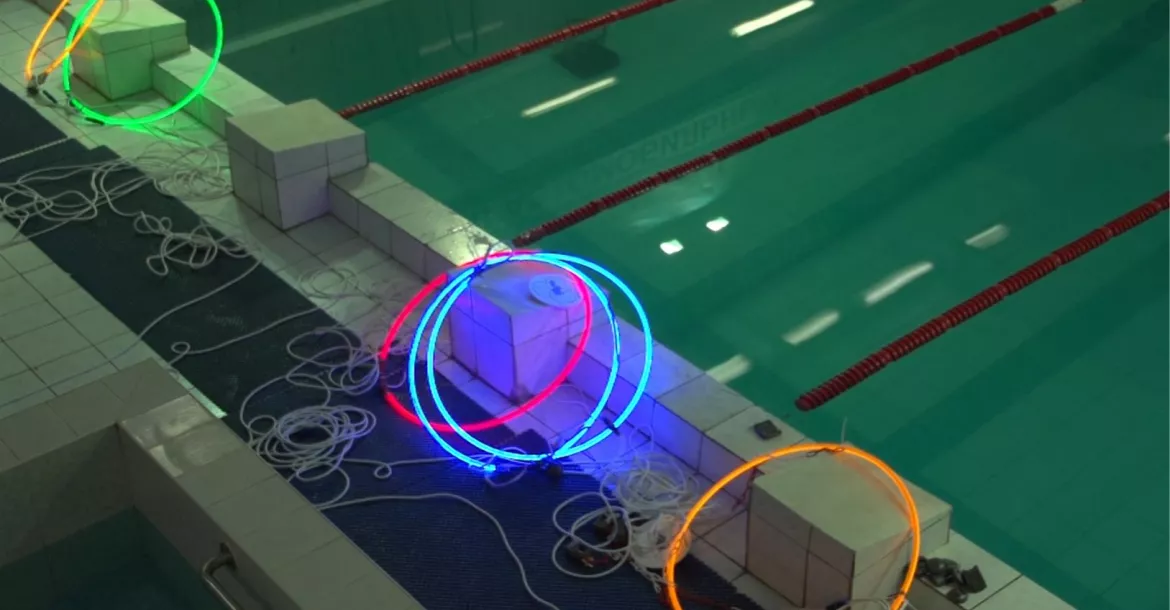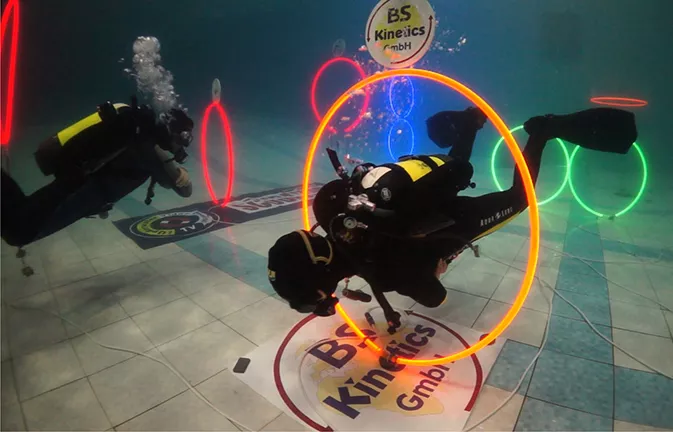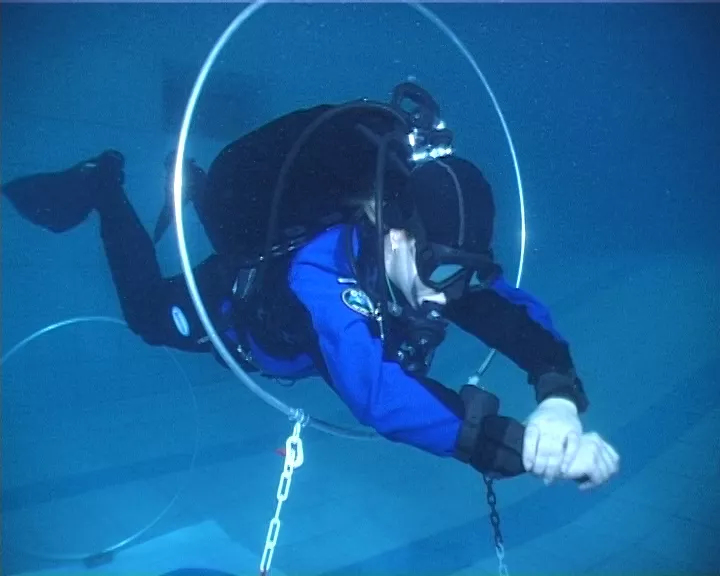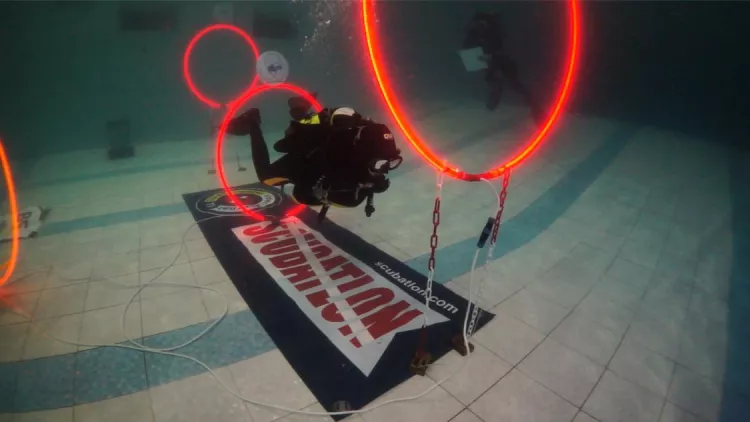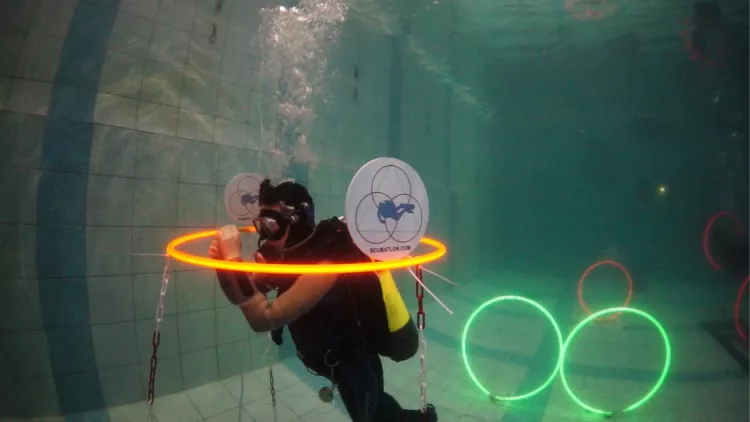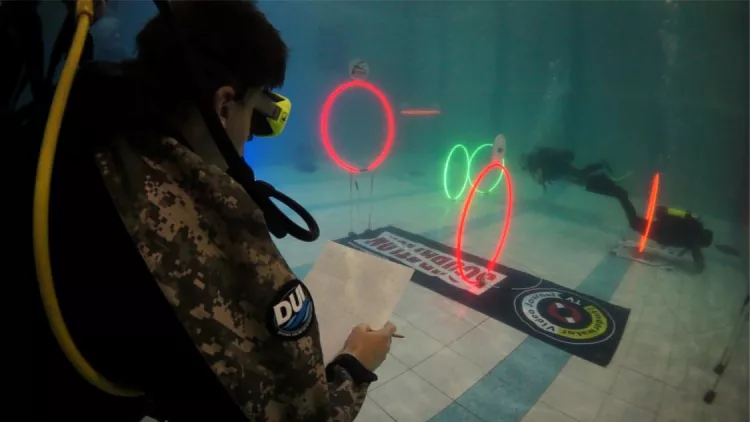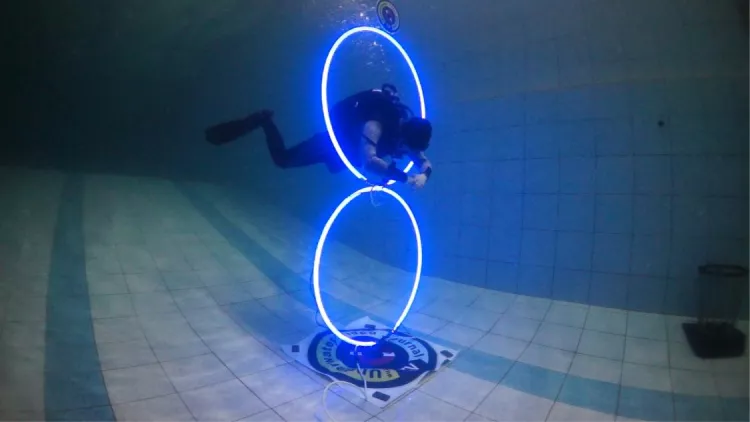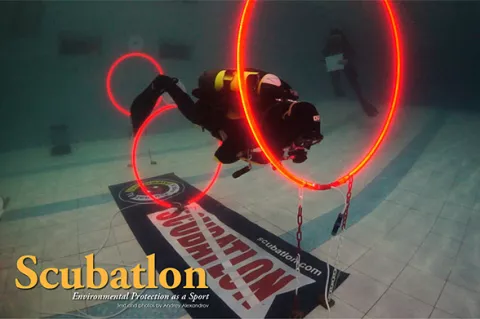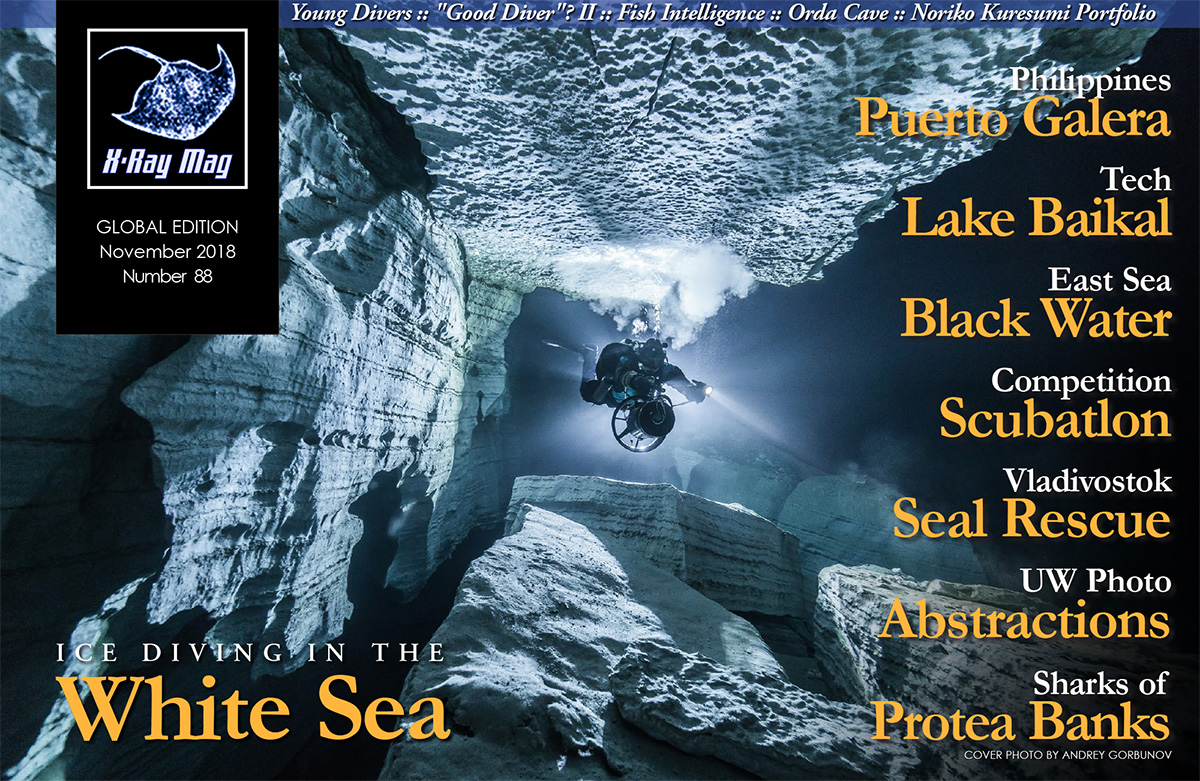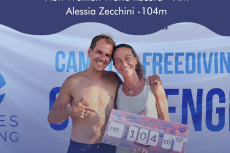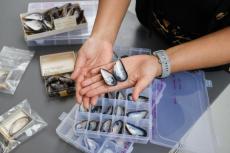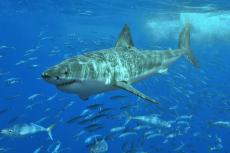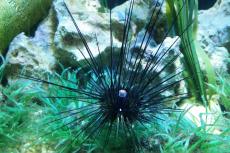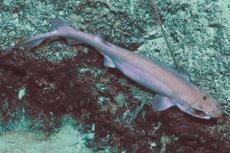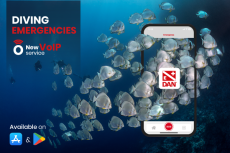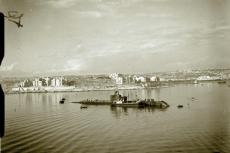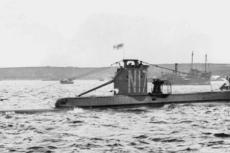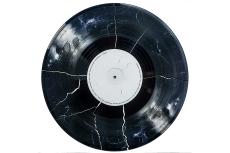Over the last half century, scuba diving—which was, in its earlier days, reserved for the elite, brave and courageous—has become a mainstream sport for the masses. On the one hand, this is very good. Millions of people get to see with their own eyes how diverse and exciting the underwater world is. On the other hand, diving can cause serious damage to coral reefs, which are rich in biodiversity, but extremely vulnerable to human impact. In a response to the dive community’s demand for more protection of the reefs and the underwater realm, a group of divers came up with the idea of Scubatlon—a tournament in traditional recreational diving with a conservation bent.
Contributed by
"We are not making enough money from our dive center, but we enjoy it immensely," said science fiction writer Arthur C. Clarke sitting in his wheelchair. The rustling of palm trees and the ocean waves could be heard just outside. At his home in Colombo, Sri Lanka, I met with Clarke while shooting a documentary about his work in science fiction.
Just prior to that, we had been talking for a long time about the future of humankind and civilization on Earth. But after hearing his words about diving, I saw in front of me not just the great master of science fiction, but a quite down-to-earth person.
The problems of my dive center in Moscow, which at that moment had existed for about 15 years, were very much the same as what Clarke was describing. The flow of tourists was growing steadily, but people’s attitudes towards the ocean were changing at a much slower pace than the disappearance of coral reefs. The ocean is huge, but as it turns out, the places that are interesting and accessible to divers are not so numerous. Over the last couple of decades, the reefs in the Red Sea, for example, have been practically trampled down.
The project
The idea of Scubatlon was not to invent artificial tournaments, but to introduce elements of competition into traditional recreational diving. This is actually how the name for the event was created; it consists of two words: scuba, and a variant of the Ancient Greek word athlon, áthion or atlon, meaning competition or contest. It was my opinion that the most euphonic combination of these terms was Scubatlon.
Little had to be devised for the project itself. It was born organically, combining demand and opportunities to meet that demand. It was a response to the demand for nature protection, which had developed in the dive community. When creating my first films about the underwater world, I wanted to include an epigraph: “Look and never dive.” However, one cannot achieve much with bans. We had to look for more realistic solutions. The start of the Scubatlon project helped me to get a load off my mind. The new slogan was “Environmental Protection as a Sport.” Rather than making up competitions for divers, we created a sports discipline to help develop safe diving.
Returning students
The first Scubatlon contest was held by our dive club in 2005, the same year the Scubatlon Association was created. I was the Association President. By that time, our dive club had already existed for more than 20 years. Over this period of time, some of our students, who had completed the training and traveled to the sea, returned to us with a request to teach them to “dive correctly.” We all knew the problems that recently certified open water divers caused on the coral reefs. They were the ones who damaged the reef most during their first dives.
And the remarkable thing was that many of these students came back to us, having felt the responsibility for the reef and its inhabitants. The situation with this group of divers was quite clear. If there was a will, there would be a way to teach them.
The other group of open water divers believed that they dived just fine, proudly displaying their certificates, and had no interest in learning how to dive in a nice fashion. Or, rather, the thought just did not cross their minds.
Buoyancy is key
There are a lot of courses available at dive centers to help improve one's buoyancy. The problem was that they were a trifle boring. The course results were not immediately visible—maybe that was why they were not very popular. With Scubatlon, the situation was precisely the opposite. Not only do you acquire buoyancy skills while preparing for the contests, but you are also improving them at the same time.
Location
The second problem was a geographical one. Nowadays, there is no sea in Moscow. Two hundred million years ago, there was one, but it no longer exists. Rather, it is still there, but deep underground. Well, try and explain this to the people who want to dive right now. A swimming pool, in its traditional form, is a very poor substitute to the sea. Staring at the patterns on the swimming pool walls is not as exciting as communication with live creatures in nature. Certainly, dive club events can be organized with some artificial activities in the swimming pool, but this is not very entertaining.
Having realized these problems, we tried to resolve them. One of the tasks was to teach divers good manners, and in such a way that the process was interesting to participants and the result was evident. By combining training and games, Scubatlon became an obvious response to the demand for more protection of the reefs. It was a game with a practical result. In scuba diving courses, we teach people to dive nicely, to manage air consumption and not to brush against anything when diving. The contests were aimed at developing these skills.
Traditionally, the contests are held at night. That is why the name of our event is Scubatlon Night. This is a so-called tribute to tradition.
Combining traditions
In addition to an underground sea, Moscow has other remarkable phenomena. For example, there is a custom here to celebrate the Old New Year (or Orthodox New Year) on the nights of the 13th and the 14th of January. This is hard to understand at first glance, but there is a logical explanation to it. The church in Russia lives by the Julian calendar; it is called the Orthodox Church for a reason. The state, however, follows the Gregorian calendar.
So, everybody is happy about an extra holiday, and divers in Russia found a very good application for it. Many Russian dive centers have a tradition of seeing in the Old New Year—underwater. Considering the not-so-long history of scuba diving, this event has already turned into a “beautiful old custom.”
Due to its age, our dive club was one of the founders of the Old New Year tradition. The event went as follows. At ten o’clock in the evening, the pool closed for the visitors, and a variety of contests and relay races started underwater. We saw that all we had to do was just to replace these activities with our Scubatlon competitions.
But traditions are strong. The culmination of the celebration had been to welcome the Old New Year underwater with champagne. This moment threatened to divide the competition into two unequal parts. But the issue was resolved by the competition itself. In the heat of all the activities underwater, nobody noticed the start of the Old New Year.
Requirements and conditions
In the beginning, there were no limits. Divers holding beginner level certificates of any generally accepted diver training system were admitted to the starting level contests. The requirements of the competition were most-closely related to “combat” restrictions (practical skills). There was a minimum of “academic” restrictions (theory).
The participants swam the obstacle course with the equipment they used for open water diving. One could argue, which is better: BCD or wing? Lately, the argument also includes sidemount. Each diver selects what he or she considers is better. Everybody must comply with the following principles: personal safety, convenience and no damage to the environment. There was no need to buy special equipment for the contest. All gear and special options used for improving your streamlining and buoyance on the competition track would come in handy during the recreational diving obstacle course.
Any configuration was allowed, including wetsuits or drysuits. The mandatory conditions included an octopus, an analog pressure gauge on a console, and tank capacity no less than 12 liters. The exception was the 11.3-liter aluminum tank, as its dimensions were close enough to the 12 liter steel tank.
Response and improvements
Of course, we were very nervous before the first competition. We could not predict the response of divers accustomed to open water. There were some doubters who spoke out quite harshly against our initiative. But critics will be critics, it is always easier to criticize.
As it turned out, our fears were unfounded. The first competition was a great success. But with the first admirers of the event appeared the first problems. Suddenly, we discovered that all the participants were different in height and constitution. We managed to resolve this problem by placing the obstacles in the obstacle course at an angle to each other and at different heights. It then became possible to pass the track only by using a helicopter turn and by altering buoyancy.
We also had to simplify the track a little. For example, the obstacle consisting of two rings lying horizontally, one over the other, turned out to be too complicated for divers at the beginner level. So, we used only one ring. However, there were expert divers who managed to pass the whole line of obstacles with twin tanks.
The track time of each participant was fixed. The more participants, the more time it took. The competition became a night-long event. In order to improve the pass-through capacity, we made two parallel obstacle courses. This solved one problem and added another. Now we had two participants in the water diving at the same time, so we had to add a judge and an assistant judge who could restore the course after negligent divers disrupted obstacles.
Our varied depth pool, which had a 10x12m deep section, started to look like a marine mammal pen. In addition to passing through the obstacle course, being mindful of its restoration and achieving the best result assessment, divers all also had to stay clear of each other. The underwater scene became lively and much more fun.
Special effects
However, the underwater landscape was a bit gloomy due to the aluminum rings and standard lighting of the swimming pool. We wanted to make the action in the pool look more like a stage show, so we got the idea of using glowing rings.
At first, the task was easy. But the rings had to be light, strong, have positive buoyancy in fresh water, keep their shape at depth without deforming, and on top of it all, they had to glow and not cost as much as a spaceship. The process turned out to be labor-intensive and expensive.
The first testers of the glowing rings were sharks in the sea. No issues with them. But it did not go so well with actual divers.
It turned out that the glowing rings were quite vulnerable to some of these “fin-footed mammals.” Since we admitted everyone in our contests, irregardless of their skill level, the first obstacle course of rings was destroyed.
The problem was resolved by dividing the participants into groups. The contests with an obstacle course comprising metal rings were open to everyone holding a dive certificate. The glowing-ring obstacle course was limited to only those who had passed the Scubatlon Scuba Master special training course.
Scubatlon Scuba Master course
In addition to buoyancy training, this course also prepared students for the contest. Following the already established syllabus, we included elements of the games in the training. Each lesson ended with working on how to pass one of the obstacles in the Scubatlon obstacle course.
This was a very important moment for students, as they could see the results immediately. The students then became more motivated to take part in the contest and compare their skills with those of others. One can make hundreds of dives and collect a stack of plastic cards, but the objective indicator of the skill to dive expertly and safely for the environment is easily tested by the Scubatlon obstacle course, where all the participants are on equal footing.
I would like to note that the Scubatlon Association, as a matter of principle, does not conduct beginner level dive training, as this process is already well organized. Our training is for certified divers. We accept the certificates of any generally accepted training system, beginning with Open Water Diver or One-Star Diver level, or other similar certifications.
Expansion and development
A big surprise was that Scubatlon, which started as an internal club entertainment event, quickly developed into something bigger. The idea was taken up by other dive clubs. They started holding their own internal contests and regular training sessions. Step by step, the competitions between dive clubs developed into the Scubatlon Cup. Now, various dive clubs send their teams to the Scubatlon Cup stages.
A “side effect” of all these training sessions and contests is a continuous improvement in divers’ buoyancy skills. As of today, there are now several levels of difficulty in the obstacle courses designed for different levels of participants.
Since 2015, the tournament is held in five stages over a year. At each stage, there is a winner. The results of the five stages determines the Cup finalists. The competitions are held as individual and all-around team events. The Cup itself is a perpetual trophy and has been passed on to the winning dive clubs since 2017.
Dive equipment manufacturers have also gotten caught up in the idea. Winners now receive awards at the Cup stages and at the regular contests. At the Cup stages, the awards are presented by TUSA. The Cup finalists get the Aqua Lung awards, and the winner receives a regulator from LEGEND.
These days, Scubatlon steps out far beyond Moscow’s city limits. In Russia, the contests are also held in the Urals and in the Far East.
Online training and workshops
To prepare instructors and judges, we use online training in addition to workshops. The online training experience has proved to be very useful for international certification. A Scubatlon Scuba Master instructor is qualified to teach a relevant course and judge the contests. A judge, respectively, is authorized to assist the instructor when training and to judge the contests.
To be certified as a Scubatlon instructor, one needs to have an instructor certificate from one of the generally accepted dive training agencies. Similarly, a judge should be certified as a Divemaster or Three-Star Diver, or hold a similar certification at the corresponding skill level. Since the project is still developing, we offer some free instructor and judge certificates for new regions and countries.
Open water contests
Naturally, from the very first days of development, we were tempted to hold the contest in open water. A pool is the least-evil solution, but we had to try. First, we set up the glowing obstacle course in Hurghada. We held a contest at the Dahab lighthouse.
The main problem with contests in open water is the currents. In Hurghada, we found a suitable place—a closed space without currents, with depths of six to seven meters. We set up the obstacle course… and the first one to get in there was a sea turtle. Looks like animals like the idea too!
We also organized the contests in the Mediterranean Sea in Turkey. Now, having gained some experience, we are preparing to hold the Scubatlon Cup competitions in open water. We hope this movement will continue to expand, and we look forward to meeting you at the competitions. ■
For more information, visit: scubatlon.com/en/

